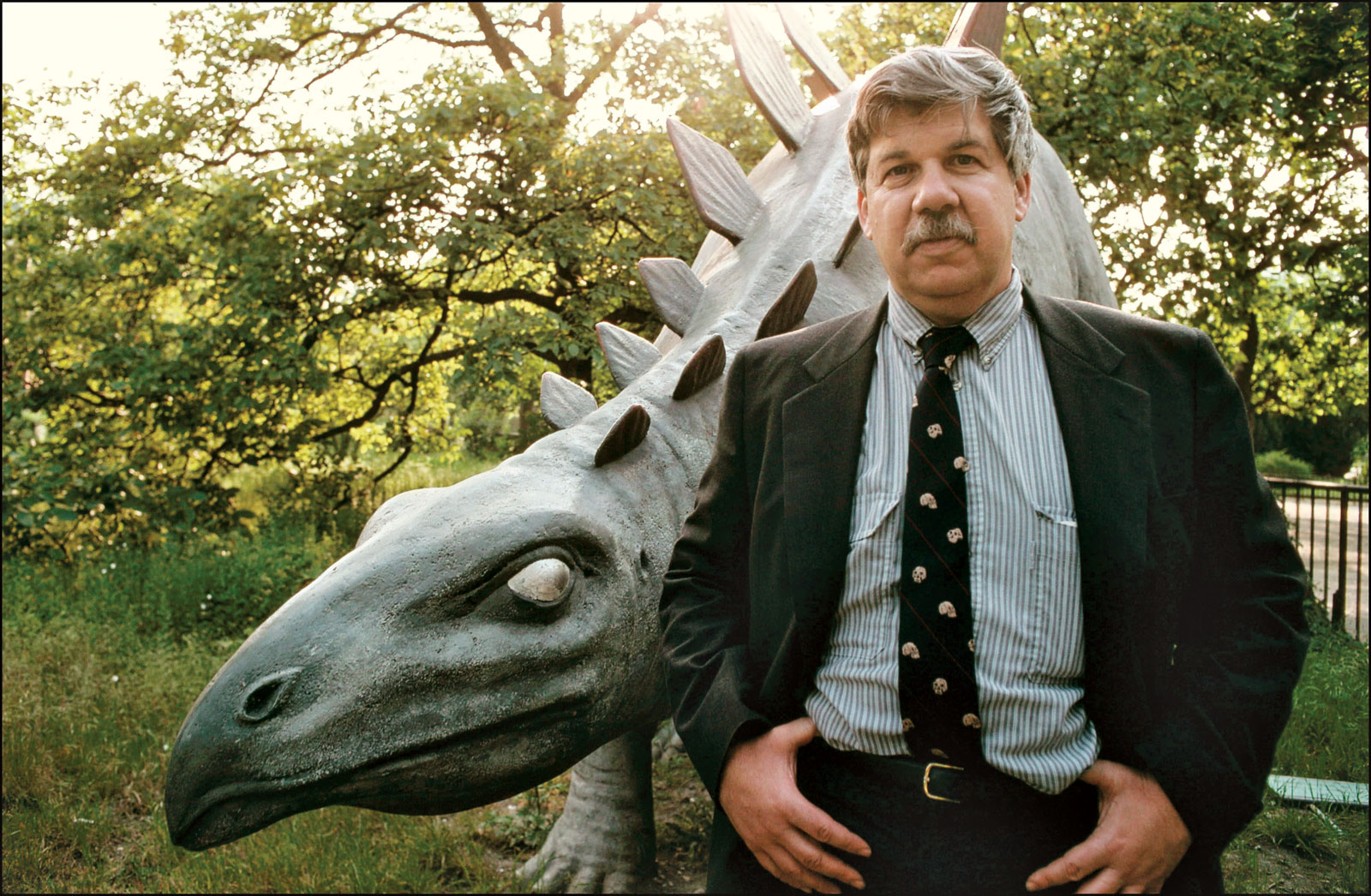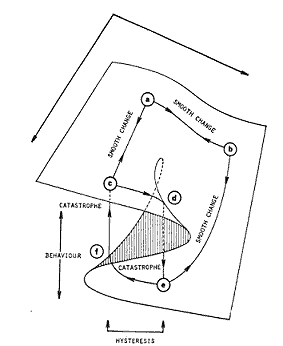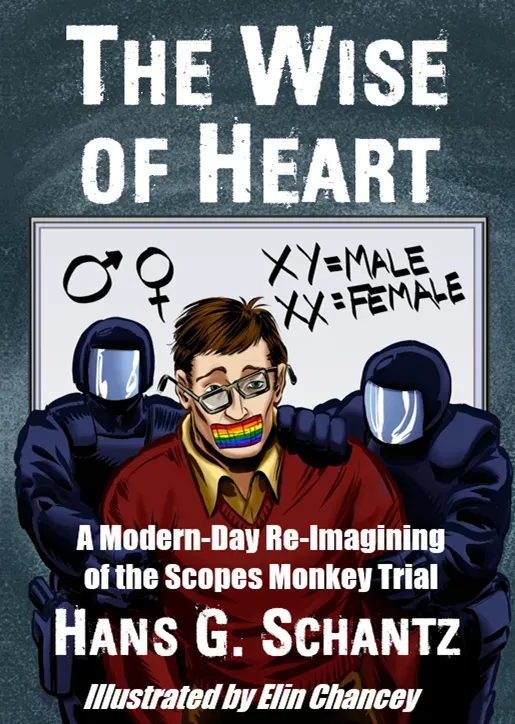The Long View: The Hedgehog, the Fox, and the Magister's Pox

Greg Cochran has written one entry in what he threatened would be a new series, Speaking Ill of the Dead. The subject of that essay was Lynn Margulis, who came up by coincidence here recently. Stephen Jay Gould would probably be a feature in Greg's series also, if he hadn't so frequently excoriated him already. Even the gentle Henry Harpending [RIP] wasn't above mocking Gould.
Since I know that Gould wasn't above lying in the name of what he thought was a good cause, I have to consider all of his work suspect until proven innocent. I find my opinion of Gould ameliorated some by the fact that he knew the Renaissance humanists where an intellectual black hole: knowledge when in, but it never came back out.
Nonetheless, despite Gould's immense popularity, I have to question whether his net contributions to science were positive, largely because he used his popularity to taint well-supported ideas he found politically distasteful.
The Hedgehog, the Fox, and the Magister's Pox:
Mending the Gap Between Science and the Humanities
By Stephen Jay Gould
Harmony Books, 2003
274 Pages, US$25.95
ISBN 0-609-60140-7
This is Stephen Jay Gould's last book on natural history. The book began as the author's presidential address to the National Academy of Sciences in 2000, but most of the text is new, and not a compilation of previously published articles. Unfortunately, the author did not live long enough to proof the manuscript, with the result that some of the prose is a bit mysterious. This is true even of the title. The “hedgehog” and the “fox” need no introduction, perhaps (one of them knows one big thing, and the other a thousand small things), but the “magister” is merely identified as an Inquisitor of the Diocese of Pisa who failed to excise Erasmus's name from a book of natural history. Readers will puzzle why the magister is there. Despite these defects, however, this is a gripping book for anyone concerned with the place of the natural sciences in intellectual history. What we have is a moderate postmodernist's concept of a Theory of Everything.
Gould is trying to do three things in this book. The first is to trace “the battle between the ancients and the moderns,” which began with the beginning of modern science in the 17th century, and which has erupted episodically ever since. The second is set out a model of knowledge that can reconcile the scientific and humanistic portions of the modern mind. The third is to refute a competing model devised by Gould's Harvard colleague, the sociobiologist E. O. Wilson. In 1998, Wilson published a book on this subject entitled “Consilience,” a term coined by the Victorian divine and Oxford naturalist, William Whewell. Gould reminds us that he had rescued Whewell's term from almost complete obscurity some years ago. In this book, Gould plainly wanted it back.
Echoing a theme he has made in previous works, Gould points out that the Whiggish historical model of the development of science as a long battle with religion is simply false. The early scientists were all at least conventionally pious, some were fervently devout, and not a few looked on their research as a form of apologetics. Their real opposition was the humanistic tradition of the Renaissance. That type of scholarship, even when it dealt with natural history, was wholly literary. It was concerned with recovering and ornamenting the Classical past. Therefore it was suspicious of novelty, including new results from scientific research. To overcome that cast of mind, early modern science developed some bad habits, such as a studied indifference to literary style, and an implausible insistence that science is free, not just from biases, but also from preferences.
Gould recognizes that he is walking across a historiographical minefield here. The very idea of a “Scientific Revolution” has been called into question: early modern science was in fact pretty continuous with late medieval science. He also recognizes that “the Battle of the Books” or “The Battle of the Ancients and the Moderns” was not essentially a struggle between natural scientists and humanists. Many of the new science's greatest supporters were notable humanist scholars. Still, a point that he does not make is that humanist studies changed quite as much in the 17th century as science did. The whole of European intellectual life was moving away from the mere amassing of facts and discernment of correspondences, and toward synthesis of ideas and an appreciation of fresh observation. Science, really, was just one instance of a larger trend.
One may question whether the later episodes of intellectual conflict that Gould discusses are really rematches of the Battle of the Books, but they do have their own interest. Regarding the 19th-century conflict over evolution, Gould notes that, again, it was not a matter of science versus religion. Many scientists did not accept Darwin's conclusions, while many sophisticated religious people did. Actually, of those proponents of evolution who were inclined to pick a theological quarrel, it was not so much religion they opposed as Catholicism: Protestantism was supposed to be compatible with science.
The next supposed battle of the books, the controversy sparked by C.P. Snow's famous book, “The Two Cultures,” happened just at the beginning of Gould's academic career. He is now inclined to dismiss it as a tempest in an Oxbridge teapot. Maybe there were common rooms, in the colleges familiar to Snow, where all the dons were literary types who knew no science, and maybe there were other common rooms where the dons were scientific philistines whose minds were untainted by humane learning. If so, these creatures rarely ventured into the public eye.
Gould is no doubt right when he says that the “Two Cultures” debate was a battle of strawmen, but the matter is more problematical when we come to the “Science Wars” of the 1990s. At that time, some social theorists began applying the sort of deconstructive techniques to the methods and results of the physical sciences that had long been familiar to the humanities. At the extreme, this project could be taken to imply a denial of the impossibility of an objective account of physical reality: the scientific view of the world becomes just another construct. Gould denies that any considerable number of scholars ever went to that extreme.
Frankly, my own impression is that a large percentage of the participants in these polemics conformed to stereotype, but maybe they were not representative of their disciplines. (In any case, as Gould points out, few working scientists even heard about the debate.) Gould himself was a member of the moderate social-constructivist wing. Though not denying the final validity of confirmed scientific results, he has always been keen on the relationship between science and cultural history. He is, moreover, a notable essayist: like Freud, he might retain some status as a literary figure, even if all his science were later dismissed. In fact, when Gould talks about the reconciliation of the sciences with the humanities, one cannot escape the impression that he means that more people should do what he does.
And how might science and the humanities learn to live together? Through the recognition of NOMA: “non-overlapping magisteria.” The physical sciences have their own methods and manner of growth. They deal with the objective material world. Their results, however, tell us nothing about art or beauty or ethics or theology (theology properly understood, no doubt). Gould quotes Hume to the effect that you can't get to “ought” from “is,” but insists that “ought” is vitally important. Ethical issues may be addressed through systems of organized knowledge, and the results of scientific research may settle the factual context of ethical questions. However, questions of ethics and value, though quite legitimate, just are not scientific questions.
One might say that what we have here is another example of the model of the “Two Swords.” “Render to Caesar the things that are Caesar's and to God the things that are God's”: this grasping for a dichotomy that is not a dualism appears in couplets from the distinction between noumenon and phenomenon to the separation of Church and State. However, this model did not prevent the Investiture Controversy, and its performance has been spotty ever since. For one thing, it is never clear which side has a right to what. Gould sometimes seems to suggest that science is the rightful possessor of quantity, whereas theology and the humanities are the proud possessors of qualia, but he never quite makes the leap. One could see why: that would be an admission that science is the realm of gray theory, while the humanities deal with real life. Of course, there are other reasons to hesitate: the humanities don't really seem to be up to shouldering the responsibility.
Gould's model of knowledge, then, is not a monolith, but a “coat of many colors.” It fact, it bears more than a little resemblance to his model of the biosphere. It is governed by contingency. Its future evolution is fundamentally unpredictable. However, even though it is non-hierarchical, it is yet by no means an anarchy. Furthermore, it is progressive. As we noted above, Gould revived the notion of “consilience,” or “jumping together,” from the 19th-century historian of science, William Whewell, who coined the term to refer to the act of induction that creates a new synthesis. The most famous example is Newton's realization that the fall of an apple and the orbit of the moon are expressions of the same principle. Gould proposes Darwin's formulation of biological evolution as the most important example of consilience in history. In any case, while Whewell noted that consilience operates within each physical science and even between them, he cautioned against attempting to synthesize the sciences and the humanities by this method. If I understand Gould's précis correctly, Whewell's position was that the humanities just did not function like the sciences. Consilience was the way that Whewell had observed science to proceed. No similar pattern appeared in art or politics or theology. Though Gould suggests that the sciences and the humanities might unite in a consilient fashion to address important issues, he agrees with Whewell that they cannot be incorporated into a single structure, especially not one that assigns places of higher and lower.
It was precisely such a hierarchical structure that Gould's Harvard colleague, E. O. Wilson, proposed in his book, “Consilience.” Wilson's hierarchy actually appeals to Gould. Scientific hierarchies tend to take physics as the summit and the model, granting a progressively lower status to each discipline as its subject matter becomes more complex and murky. In such systems, Gould's own subject of evolutionary biology is pretty far down the scale (Wilson is an expert on ants, by the way). The social sciences are submerged in the nether muck.
Wilson flips this structure. Physics is only the beginning, the least of the sciences. The hard questions are the ones that deal with life, with community, and finally with mind. So, if Gould accepted Wilson's model, Gould's area of study would be raised up high, though not so high as, say, musicology. The price would be that the phenomena of every discipline must be assumed to be reducible to a mechanical physical substrate.
Gould tries to distinguish the practice of materialist reduction, which Wilson advocates, from Whewell's consilience. It's harder than you might think. In any case, what Gould really advocates is the different, but essentially complementary, attitudes toward knowledge that are represented by the animals of the title of Gould's book. The hedgehog addresses a problem by taking it apart into ever-smaller problems, and always finding more to discover. The fox takes bits and pieces of information from every direction of the compass, and puts them together to make something new. Gould's objection to Wilson's version of consilience is that it would require all foxes to become as monomaniacal as hedgehogs.
Wilson is aware that his materialism is a metaphysical proposition. Still, he feels confident that his metaphysics will be born out. The only reason that Logical Positivism failed in the first half of the 20th century, Gould presents Wilson as saying, was that we did not know how our brains work. Now, according to Wilson, we are starting to learn just that, and eventually we will have a neurological explanation of qualia. (Curiously, though Wilson addresses this question in his book, the term “qualia” does not appear in the index.) Then we will have not only a mechanical account of subjective experience; we will understand ethical and even esthetic issues through neuroscience, informed by evolutionary biology. In Wilson's sociobiology, the moral sense is simply an embedded version of evolutionary experience. Conformance to that experience is the only meaning that “right” can ever have.
There are some obvious things to say about this model, and Gould says them. He points out that Logical Positivism was not abandoned because of a lack of information, but because of internal incoherence. As a general matter, in fact, it is hard to see how questions of pure logic could ever be usefully reduced to neurological events. More important from Gould's point of view, it is difficult to see how a subject like evolutionary biology could be incorporated into a reductionist system, since so much of life seems to be a collection of frozen accidents. And if you take a strong view of emergent behavior, which is to say, that those features which a system displays that its parts do not, then reduction becomes impossible in principle: you can't reduce some phenomena down to a lower level because they just do not appear on a lower level.
Yet for all this, I thought that Gould refuted Wilson less thoroughly than might have been the case, simply because they are working from the same metaphysical premises. Putting aside the awkward question of the ontological status of mathematics, we see Gould objecting that Wilson's system would provide no method for critiquing such venerable practices as cannibalism or infanticide, if they turned out to be part of the evolutionary heritage of the moral sense. Actually, Gould does concede that tendencies to such behavior may well be part of our evolutionary heritage, but he assures us that we are not bound by those tendencies. We can critique and control them through other ways of knowing. To that, Wilson could respond that higher morality is also part of the inherited moral sense, and that it is precisely the goal of consilient science to show why these manifestations of the moral sense are arranged hierarchically.
So what can we say about Gould's scheme of reconciliation? Certainly his instinct toward tact is to be applauded, as is his honest curiosity about opposing points of view. Every intellectual era has its characteristic virtue, and the gift of postmodernism was the technique of “teaching the conflict.” If some great question cannot be resolved, or cannot be resolved now, still there is great merit in the ability to set out all the major arguments and make them talk to each other. The characteristic flaw of postmodernism was to make the postponement of finality a permanent principle. This is why Gould's attempt to mend the gap between the sciences and the humanities had to fail. A Theory of Everything is a sort of eschaton. That is where all the questions have to be answered.
Copyright © 2005 by John J. Reilly

The Hedgehog, the Fox, and the Magister's Pox: Mending the Gap between Science and the Humanities By Stephen Jay Gould



Comments ()